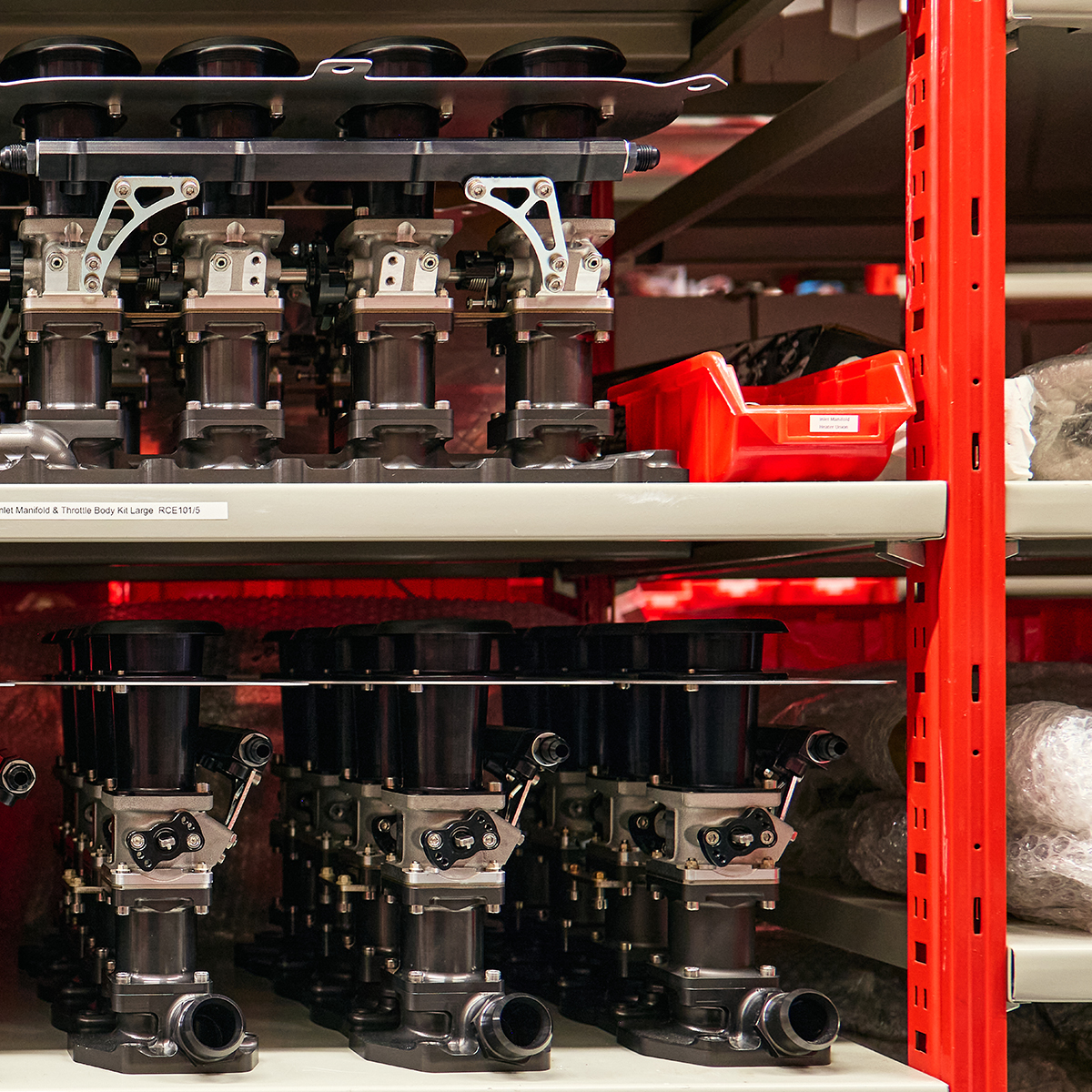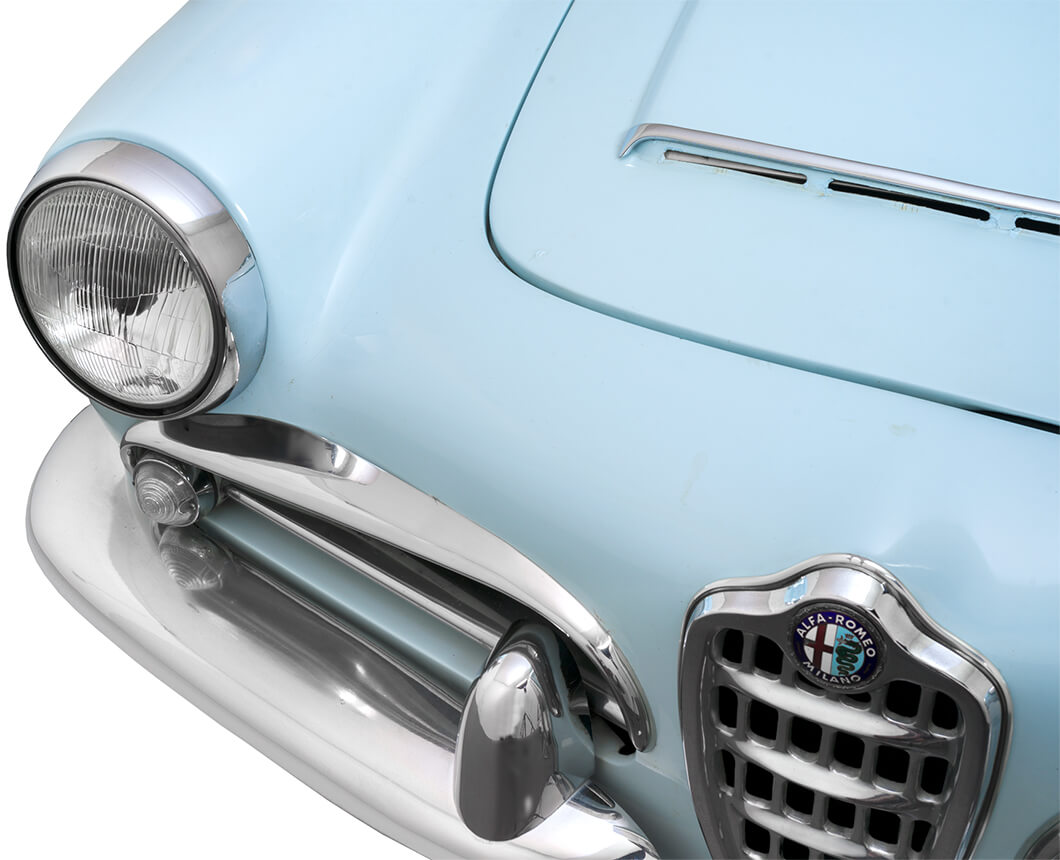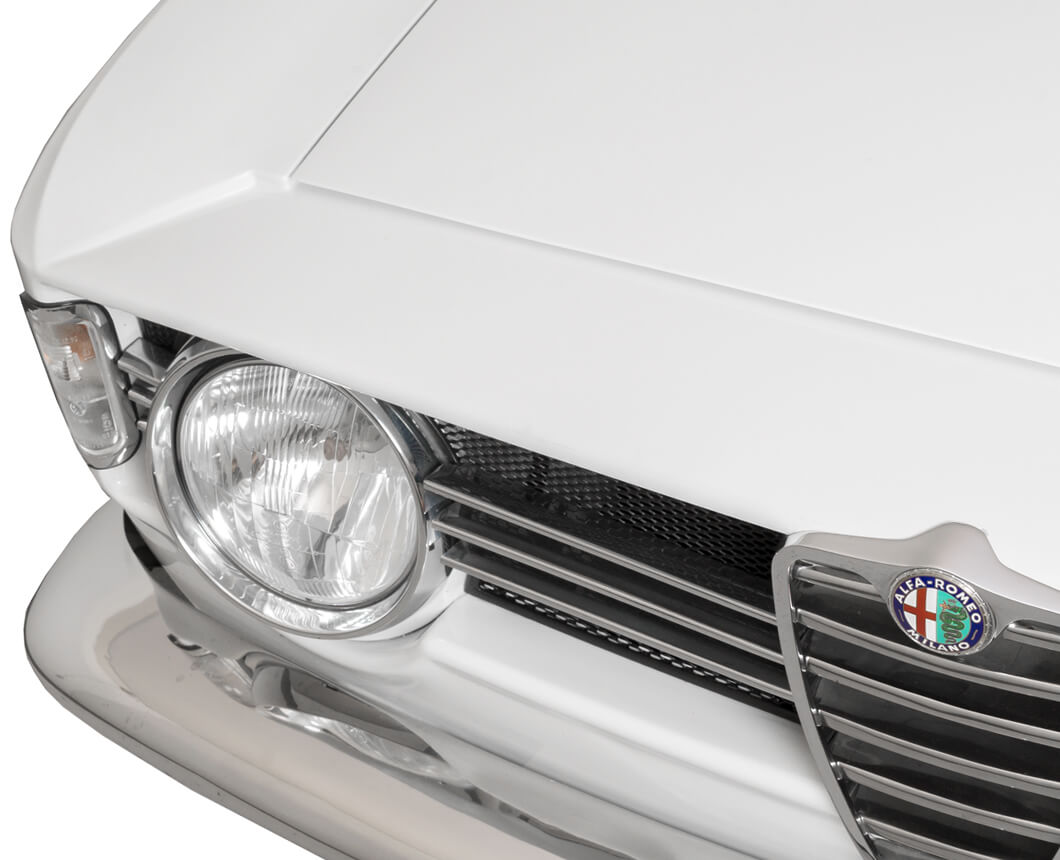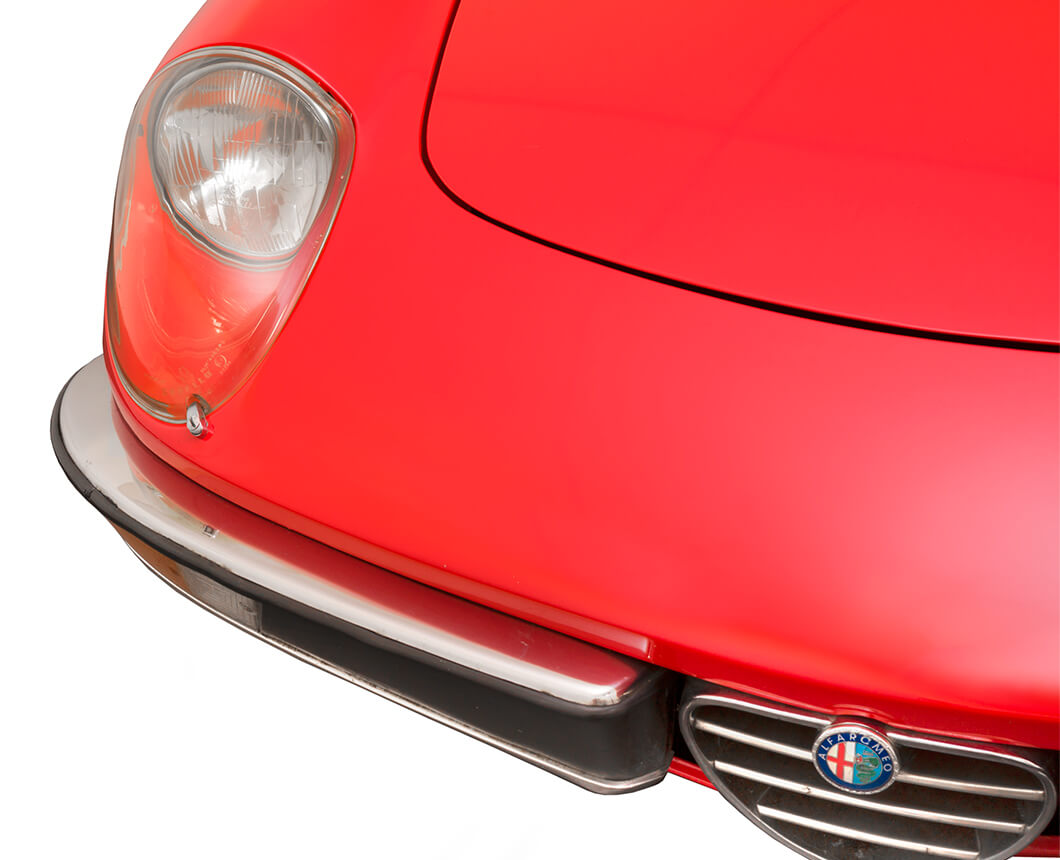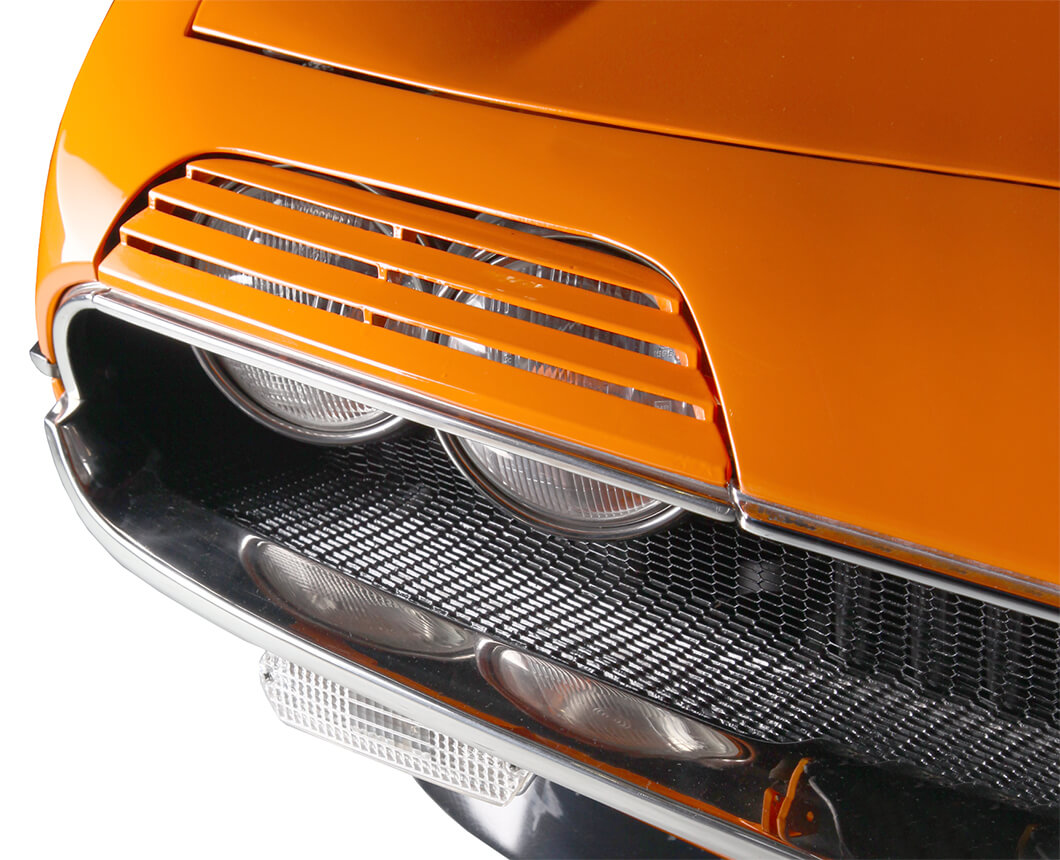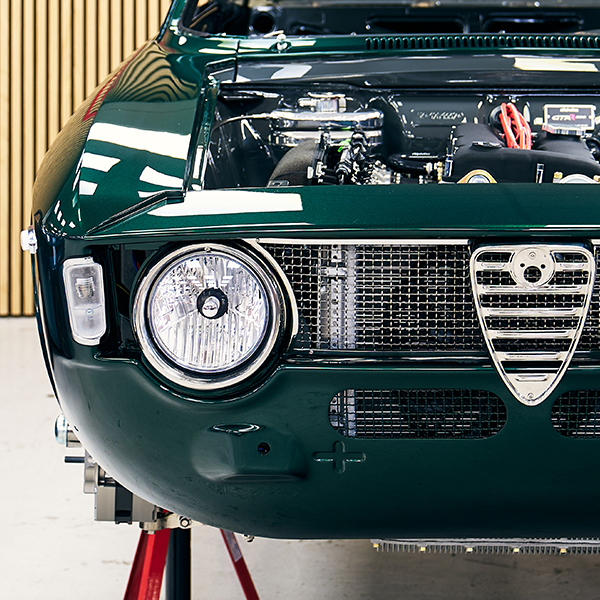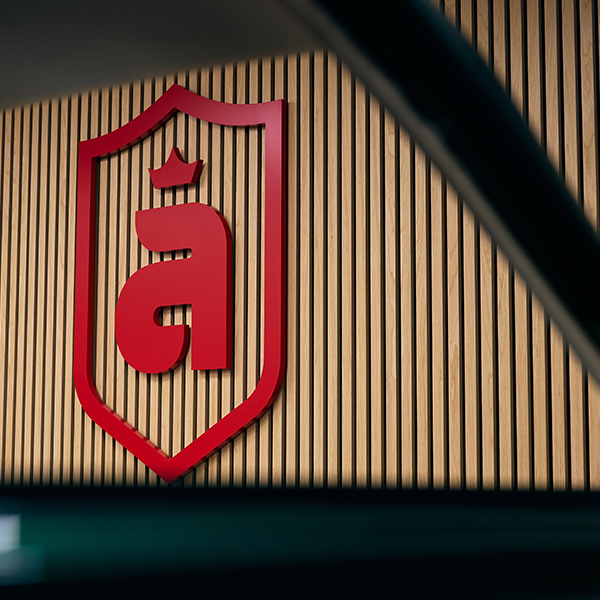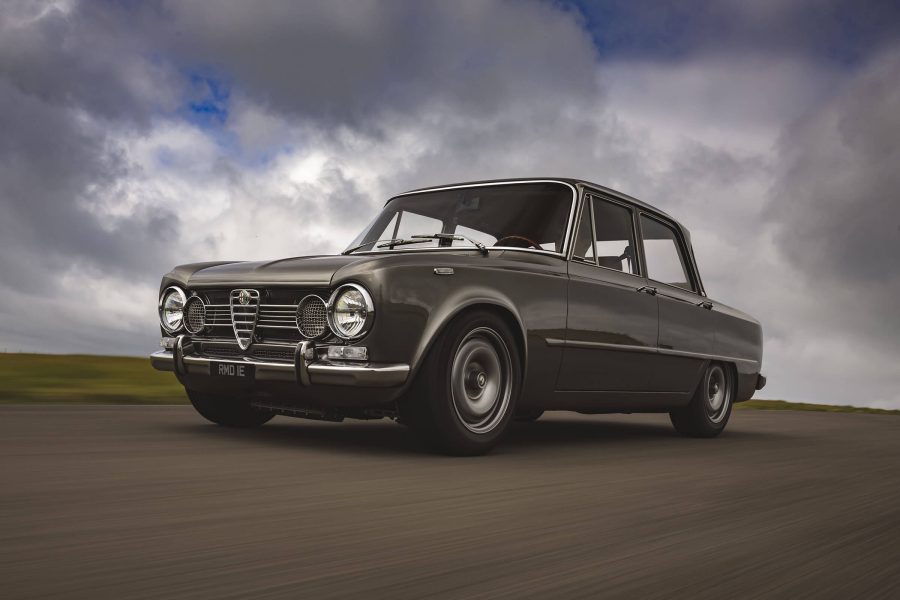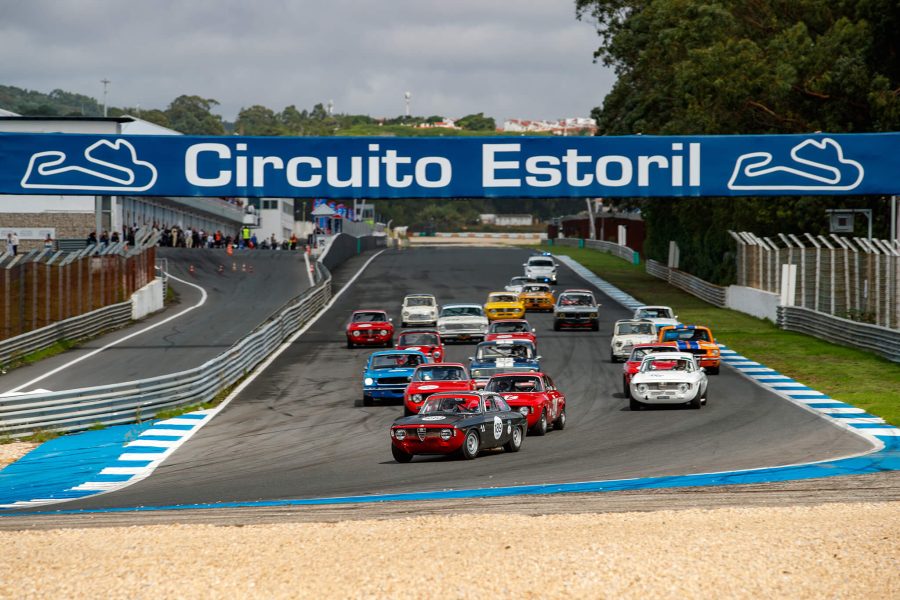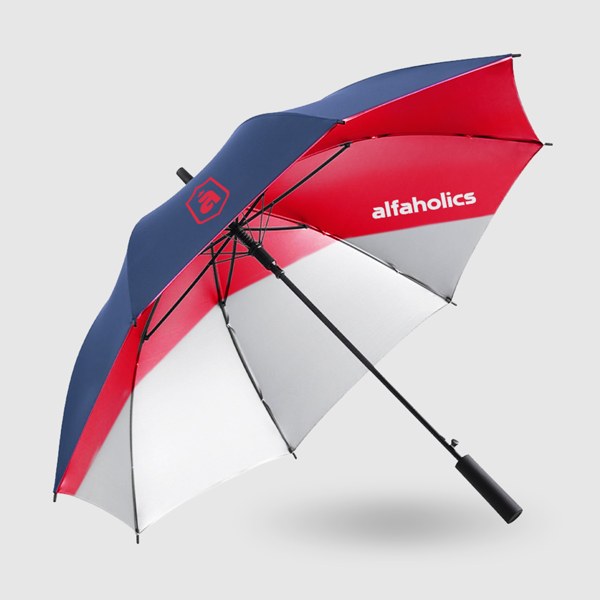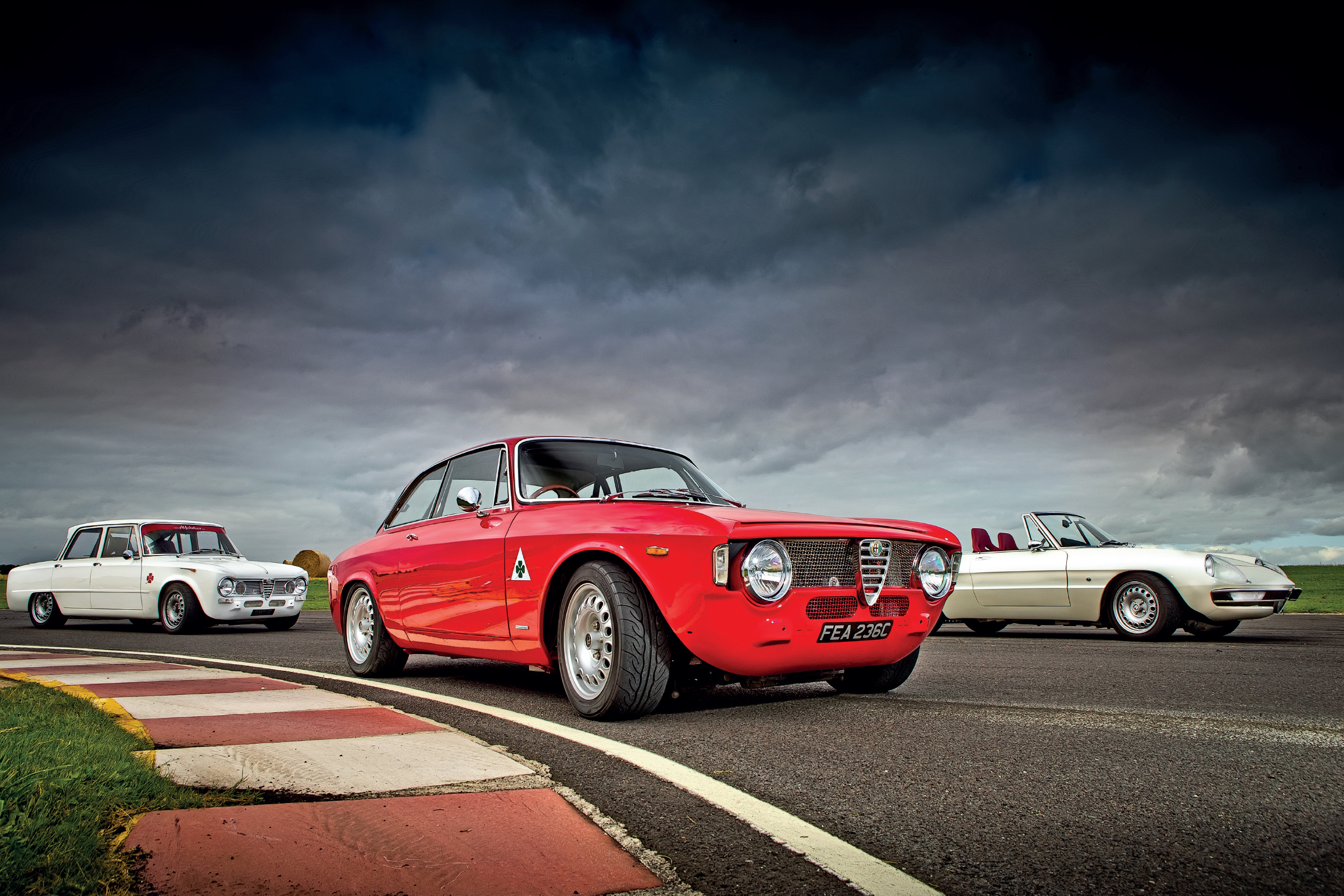
Reinvented Giantkillers
The Giulia might be 50 years old but with clever modifications this fine sporting Alfa Romeo can still punch hard against the very best of today’s sports cars.
Octane
Words: Keith Adams
Photography: Matthew Howell
I can hear nervous laughter. We’re barrelling towards a rather interesting right-hand corner, and at the speed the Alfaholics Giulia Ti-R’s oversized speedo is recording, I don’t think we’re going to make it round. That, or the instrument is calibrated in km/h, not mph. I glance forward again – my driver, Andrew Banks, is talking calmly about the Ti-R’s modifications as the wildly cambered bend rushes towards us at an impossible speed. And that laughter’s coming from me…
Andrew – along with his brother Max – is a skilled wheelman, and I shouldn’t be worrying in the slightest about the corner. He knows this Wiltshire lane that takes us to the Castle Combe race track almost as well as he knows his highly modified Giulia Ti-R saloon. And it’s this car – along with two other Alfa Romeo 105-platform variations – that I’m here to enjoy. The extent of the modifications Alfaholics treats these cars to in order to create its R-series models cannot be overstated.
‘Our GTA-R will lap the Nürburgring Nordschleife in eight-and-a-half minutes,’ Max Banks smiles. ‘And it’s where we do much of our chassis development.’ If that statement alone doesn’t tell you all you need to know about these rather special Alfas, then I’m not sure what will. Yet it’s fitting that 50 years on from the launch of the Giulia Type 105, its ultimate incarnation blows onto the scene and challenges your preconceptions of what a classic car is capable of. Although the R-series Alfas are new in terms of their branding and marketing, they are the culmination of tens of thousands of hours of honing, testing and development by Andrew and Max Banks. And most Octane readers will be well aware of the turn-key GTA replicas that Alfaholics has built over the years.
The work that Alfaholics carries out to these models is easily comparable with what Eagle does to E-types or RS Williams to Aston Martins.
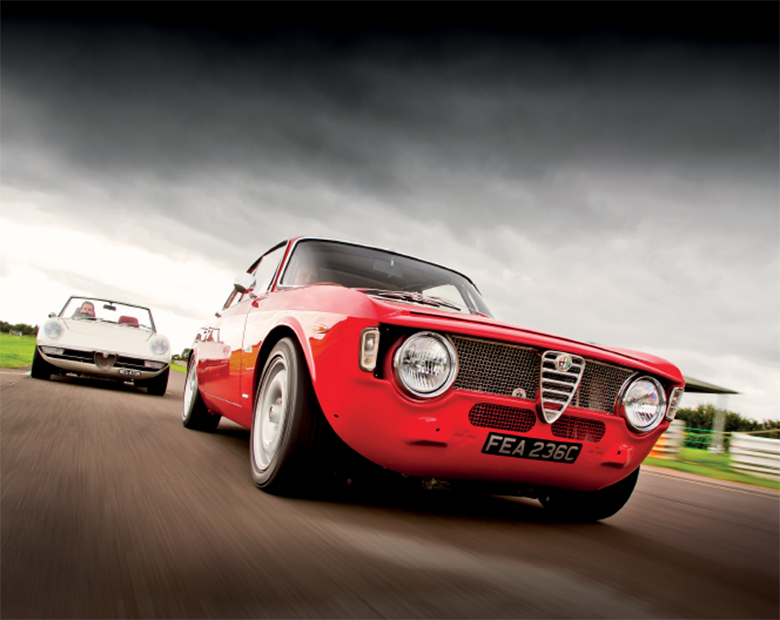
That is no exaggeration. It’s on the roads near Castle Combe where I really begin to understand the scale of what Alfaholics has achieved with its R-series cars. Even before I drive the GTA-R, or experience its Ti-R and Spider-R stablemates, my faltering giggles are a clue to the passion, if not the mechanics, that have resulted in cars with such outstanding poise and outright speed.
Andrew Banks is talking calmly about the Ti-R as a cambered bend rushes towards us at an impossible speed
Max will tell you that the tuned engine first used in the Alfa 75 Twin Spark is the beating heart of his new R-series models – and I’m not going to disagree. You might not remember the slightly gawky 75 saloon as being particularly inspiring, but back in the 1980s rather a lot of you bought and enjoyed them. The majority were powered by twin-sparks…
Alfaholics takes an engine that was already considered to be usefully powerful back in 1986, and ups its output by almost 50%. To turn a 150bhp unit into a 216bhp one, the firm gasflows the cylinder head, using larger inlet valves, and fits twin Weber 45DCOE carburettors (on a bespoke manifold). It doesn’t stop there: billet camshafts, race pistons, a lightened, balanced crank and the pièce de résistance, a programmable 3D-mapped ignition system, are all fitted. It’s the last of these additions that’s really impressive, and I’ll come back to this later – but it’s a thorough going-over of a classic power unit.
The engine looks the part, too. Alfaholics replaces the angular cam-cover with a bespoke aluminium item that looks utterly in-period. It’s such details that really mark out this car as special. For the full-fat 216bhp race version tested in these three 105-series cars, you’re looking at spending £12,950. But there are also 190bhp and 200bhp versions, which come in on a sliding price scale. And for the future, Max confirms that Alfaholics is working on a 16-valve cylinder head, which he hopes will realise his dream of producing 250- 260bhp. As it is, the current race set-up gives the 850kg GTA-R a power-to-weight ratio that’s within a hair’s breadth of the 1700kg 414bhp BMW M3. Max smiles as he says: ‘At the Nordschleife, you need a carbon fibre M3 CSL to pull away from our car.’
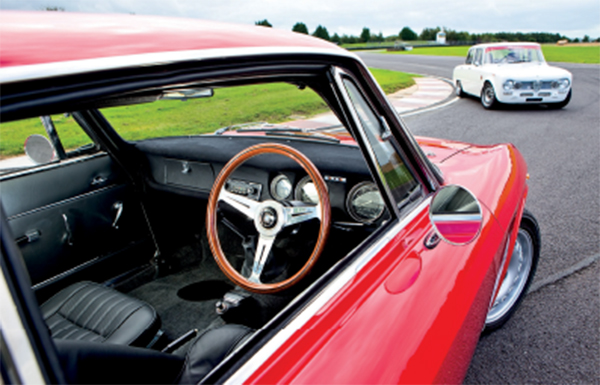
Of course, the lofty power output of that twin-spark twin-cam needs to be properly reined in. And it’s here that the R-series cars’ racing heritage shows itself – and the years of testing and development work by the Banks brothers is revealed in the suspension and braking set-up. Under those bespoke-built (and reasonably priced) 15in GTA Veloce wheels nestles a great braking system. Up front, there are six-pot billet aluminium calipers acting on 11.8in vented and grooved discs. And at the rear, they’re only marginally smaller – two-pot calipers acting on 10.5in discs. Their stopping power has already been demonstrated to me on the road…
The stock suspension has been thoroughly redeveloped, too. Alfaholics will tell you the set-up’s biggest advancement over that of the standard car are the aluminium race-adjustable coil-over-dampers, but the billet aluminium components, lightweight wishbones and spring pans all play their part in reducing unsprung weight, as well as adding precision and control.
Alfaholics takes an engine, already considered usefully powerful in 1986, and ups its output by almost 50%
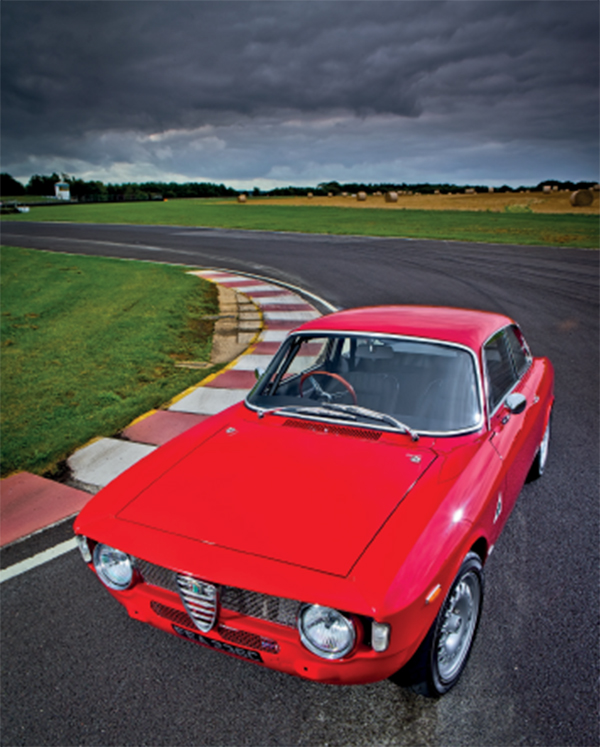
Before my ride to Castle Combe, I’d seen first hand just how high-quality these items were. Alfaholics seems to expand between every visit; this time, a mezzanine floor has been added, and it’s packed with parts, all of which seem to have been beautifully machined from aluminium. The firm works closely with motor sport suppliers, most of which are based in the UK. The smallest items – such as rose-jointed track rod ends, for instance – are an absolute joy to hold.
‘We are using higher-quality companies that manufacture products for our Alfas on an exclusive basis,’ Max had said as he showed me round the product range. ‘We do a lot of the development work on our upgrades, and work closely with suppliers, such as our limited-slip differential manufacturer. It’s a two-way relationship, and between us we arrive at a product that’s perfectly set up for our R-series cars.’
Fast forward to my ride to Castle Combe in Andrew’s Ti-R, and I’m already convinced of these cars’ pace and agility. It’s interesting that the R-series’ raison d’être is to perform well on the race circuit, and yet on cambered, pock-marked B-roads the Ti-R acquits itself brilliantly.
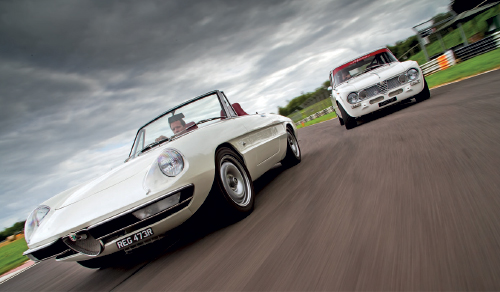
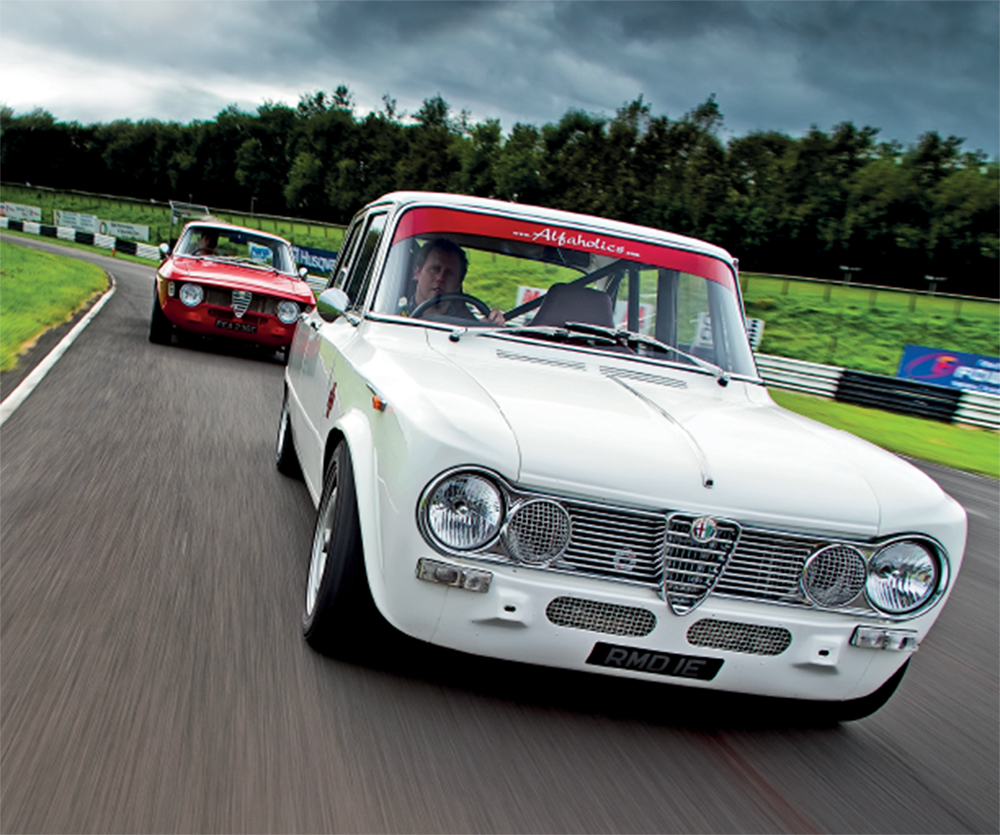
To balance the compromise between road and track takes some doing – generally, circuit-biased cars are too firm to cope with B-road irregularities. They buck, weave and struggle to get their power down in bends; but thanks to generous suspension travel and wonderfully controlled damping, the Ti-R tracks through challenging corners with no lump-related misbehaviour. It’s impressive, especially considering that there’s virtually no body roll, unlike with the standard car.
I am also blown away by the straight-line pace. I know the numbers – 0-60mph in 5.2sec and top speed nudging 150mph – but, as always, that tells only part of the story. From the passenger side of Andrew’s boxy saloon, the sensation is of effortless acceleration, almost as if that twin-cam has no real inertia to overcome. We’re on the public road, so Andrew (largely) contains his enthusiasm – but what I do learn is that, thanks to that 3D engine mapping, what should be a peaky power unit pulls – and pulls hard – from low speeds in all gears. As we roll through Castle Combe’s gates, it’s hard not to be impressed at just how capable this track-honed car is. And I’ve yet to put it through its paces on the circuit.
This ability to multi-task won’t come as a surprise to anyone who knows Alfaholics and its customers. The company arranges track days for classic and modern Alfa owners, and most participants drive to and from the venue in the car they’re going to use on-circuit. Alfaholics is clearly well aware of how classics are being driven these days, with many owners now prepared to get the best from their cars and not just keep them completely standard while polishing them and lining them up in a field.
We’ve brought a trio of models cross-country to Castle Combe. Andrew’s Ti-R led the way, with a GTA-R and Spider-R belonging to customers following in its wake. All three have been treated to the full R-series upgrades, but then additionally subjected to bespoke tailoring.
And in the case of the Spider-R, that means a new meshed grille and bespoke billet aluminium inner door handles plus a wonderful leather and Alcantara interior. The roll-cage is discreetly installed, too.
Climbing in the Spider-R, it’s the sheer quality of the cabin that impresses the most. The race Recaros have diamond-stitched leather facings which, although nowhere near standard, look ‘right’.
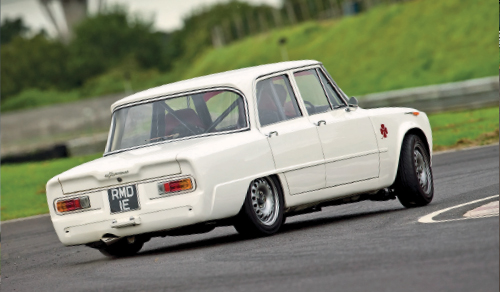
The black carpeting and Alcantara contrast with this beautifully, and Max reveals himself as a bit of an aesthete: ‘Our customers are free to choose the trims and finishes they want, but I like to ensure they create a look that suits their car.’ Quite.
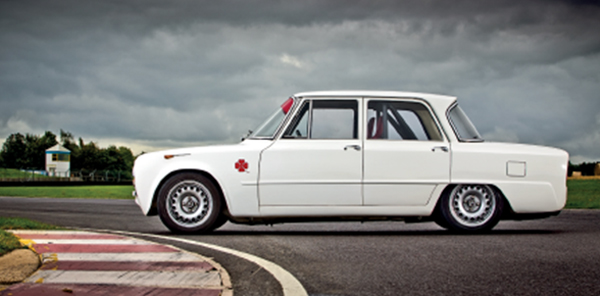
The Spider-R’s seating position is low, and the driver feels intimate with the car – elbows out to rest on the roll-bar and centre console.
The small, fat Alcantara-covered wheel feels gorgeous, while the placement of all major controls is just about spot-on if you like a legs-outstretched driving position and don’t mind a gearstick that’s too far forward. Of course, you could have a sequential paddle-shift, if that’s your thing…
The twin-spark twin-cam bursts into life with little effort – which is good, considering it’s breathing through a pair of 45DCOEs, not renowned for their hot-starting prowess – and settles into a reasonably smooth, purposeful- sounding idle. It’s not a quiet engine, but you wouldn’t want it to be, and throttle response is razor-sharp on the pedal.
A little acclimatisation is needed because, although the pedal box isn’t especially cramped, I’ve had to ditch my Doc Martens and go barefoot. Pulling away is simple, considering the car has a race-spec paddle-clutch; it just takes a little balancing for a smooth getaway. Once rolling, I floor the throttle and revel in the car’s wide powerband. Changing up at 7000rpm and snatching the gears is a joy – and there’s little longitudinal lift to upset stability.
Braking is exemplary and, although there is a slight lack of pedal feel, there’s no denying that the stoppers are effective, and nicely adjustable once you are used to how much pressure they need. As for fade, I don’t experience any during my laps.
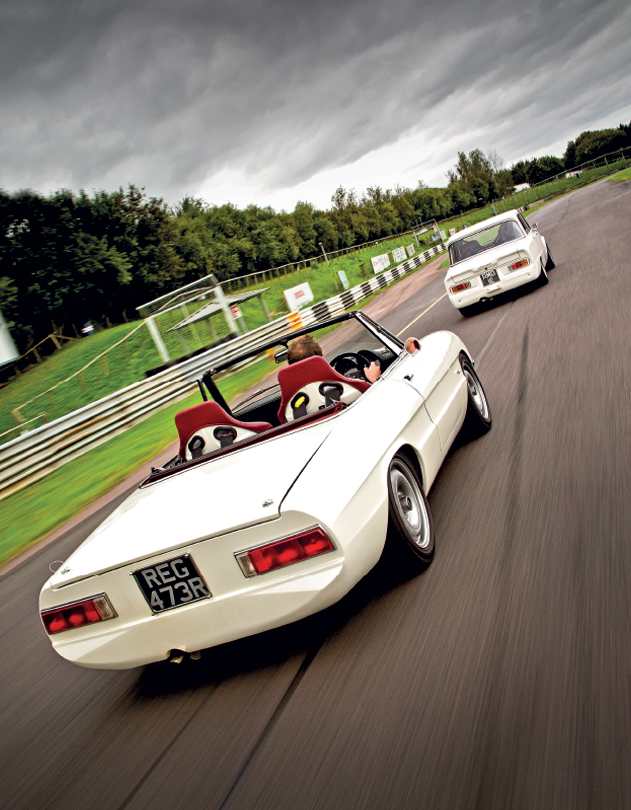
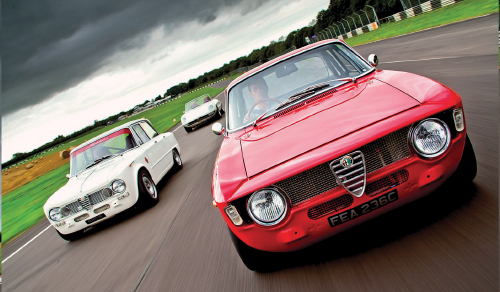
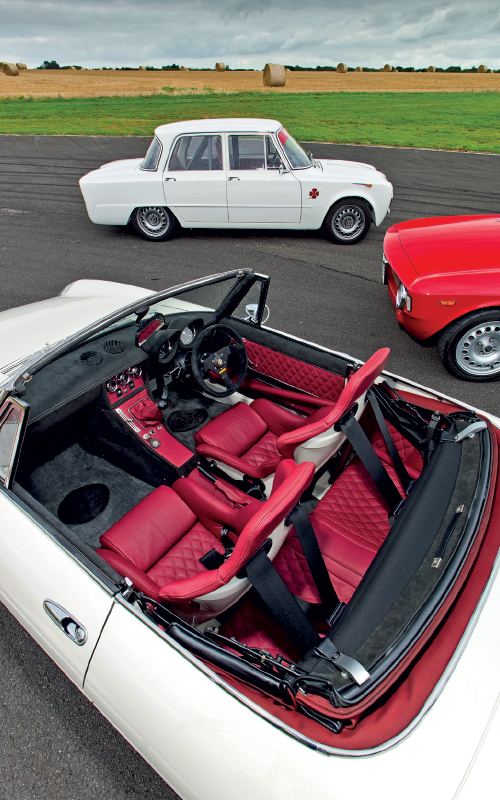
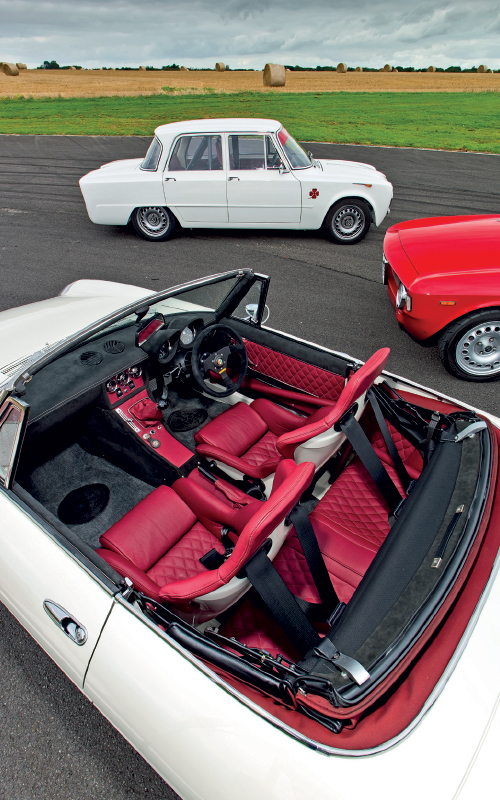
The steering is a revelation, too. It’s heavy but so communicative that you’re soon utterly confident in exploring the R’s handling envelope. As you’d expect from a car honed by circuit drivers (both Andrew and Max are racers), there’s no detectable turn-in understeer. Neither does the steering have any dead-travel, and when you load up for a bend, it responds instantly and bites with conviction.
Playing with the throttle post-apex also coolly demonstrates huge mechanical grip and traction. After a few laps the car feels natural, fast, confident and unstoppable – and totally at home. The R can be made to oversteer at big speeds, but it was Andrew who made the angles – and only after a damper adjustment. But that’s not what this car is about – it’s precise, accurate and devilishly quick, without quirks. It’s easy to see why Max would like to offer a 16-valver. The R-series will easily handle more power, and lap – hard and fast – all day long. It’ll run rings around more exotic machinery, too.
On the drive back to Alfaholics in the GTA-R, I am once again amazed by how the car seems to but don’t get me wrong – it’s effortless, and you’ll only really sense that huge level of reserve when you catch up with other cars rather too quickly…
But that’s getting to the heart of the R’s appeal. Forget the £65,000-and-beyond tag for what might seem quite a modest car, and revel in what it achieves. It’s brilliantly capable on road and track, and proves passionate, methodical development can result in a car that looks like a classic but can run with the fastest modern. As we approach that same corner we attacked with such gusto this morning, I am laughing once again – yet all traces of nervousness have disappeared.
Alfa Romeo Giulia GTA-R
| Engine | 1999cc inline-four, all-alloy, 8-valve, DOHC |
| Power | 216bhp @ 7000rpm |
| Torque | 175lb ft @ 5000-6750rpm |
| Transmission | Five-speed, synchromesh, rear-wheel drive, limited-slip differential |
| Steering | Burman steering box |
| Suspension | Front: double wishbones, 2in coil springs, adjustable aluminium dampers, anti-roll bar Rear: live axle, 2in coil springs, adjustable aluminium dampers |
| Brakes | Front: 300mm vented discs, aluminium bells, six-piston billet aluminium calipers Rear: 267mm drilled disc s, two-piston billet aluminium calipers |
| Weight | 850kg |
| Performance | Top speed 148mph. 0-60mph 5.2sec |
